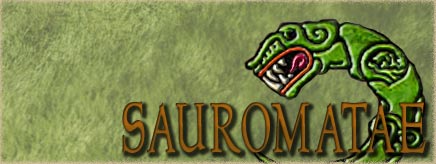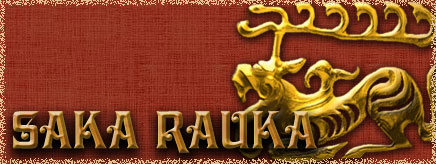[174] Weapon-burials: A 'Germanic' trait?
So we move onto these weapons, the other key support for the 'Germanic' identification, leading to a grave like Dieue-sur-Meuse 101 being called 'Germanic' on the sole basis of the fact that it has a (Roman) spear in it.
48 There is nothing of 'Germanic' origin in this grave, or its contemporaries on the site, or in the rituals used. Michel Kazanski has recently argued that the weaponry in these graves is overwhelmingly of Roman origin, and that where external influences can be detected they as often come from the east as from Free Germany.
49 Even the axe, the most common of all weapons in these graves (and, again, much more common in Gallic than in north German weapon burials), long held as being a clearly 'Germanic' weapon,
50 is probably late Roman, as numerous written references attest.
51 I would suggest that the axe is a cheap, mass-produced side-arm, perhaps for
limitanei.
[...]
49 Kazanski, 'L'Équipment et le materiel militaires', pp. 37-54.
50 Even in ORz, p. 200.
51 Axes used by the Roman army: Amm. Marc.,
Res Gestae 19.6.7, 26.8.10; Vegetius,
De Rei Militari 4.46;
Notitia Dignitatum Or. 11, Occ. 11 (illustrations of the
Magistri Officiorum for east and west);
Scriptores Historiae Augustae, Caracalla, 4.i. See also the cavalryman's tomb from Gamzigrad on the Danubian frontier, which depicts the deceased carrying an axe whilst on horseback: P. Southern & K. Dixon,
The Late Roman Army (London, 1996), p. 93. I am grateful to Dr. Jon Barlow of the University of Sydney for some of these references, though we will have to differ on their interpretation. Note, too, that no source refers to pre-settlement Franks using axes, not even Ammianus' detailed account of Julian's Frankish wars. Ulrich Dahmlos, in his seminal article, ''Francisca-Bipennis-Securis'. Bemerkungen zu archäologischem Befund und schriftlicher überlieferung.'
Germania 55 (1977), pp. 141-65, expressed surprise that no franciscae were known from the Frankish homelands. His surprise was misplaced; the true francisca is clearly, even from archaeological data, a fifth-century north Gallic development.



 Reply With Quote
Reply With Quote








 from Brave Brave Sir Robin
from Brave Brave Sir Robin from Tellos Athenaios as a welcome to Campus Martius
from Tellos Athenaios as a welcome to Campus Martius















Bookmarks